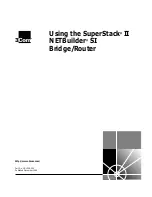
36
ENGLISH
Residual Risks
In spite of the application of the relevant safety regulations
and the implementation of safety devices, certain residual risks
cannot be avoided. These are:
• Impairment of hearing.
• Risk of personal injury due to flying particles.
• Risk of burns due to accessories becoming hot
during operation.
• Risk of personal injury due to prolonged use.
SAVE THESE INSTRUCTIONS
•
ALWAYS remove the battery before making adjustments
or changing bits.
•
Keep hands clear of bits when motor is running to
prevent personal injury.
•
Never touch the bit immediately after use.
It may be
extremely hot.
•
Provide clearance under workpiece for router bit when
through-cutting.
•
Tighten collet nut securely to prevent the bit
from slipping.
•
Never tighten collet nut without a bit.
•
Do not use router bits with a diameter in excess of
30 mm in this tool.
•
Avoid climb-cutting (cutting in direction opposite than
shown in Figure O). Climb-cutting increases the chance
for loss of control resulting in possible injury.
When
climb-cutting is required (backing around a corner), exercise
extreme caution to maintain control of router. Make smaller
cuts and remove minimal material with each pass.
• Always use straight-cutters, rabbet-cutters, profile cutters,
slotter cutters or grooved knives with a shank diameter that
corresponds to the size of the collet in your tool.
• Always use bits suitable for a speed of min. 30000 min
-1
and
marked accordingly.
•
Do not hand-hold the router in an upside-down or
horizontal position.
The motor can separate from the base if
not properly attached according to the instructions.
•
Before starting the motor clear the work area of all
foreign objects.
•
Do not use in a router table.
•
Always keep the chip shield (if included) clean and
in place.
•
Do not press spindle lock button while the motor is
running.
Doing so can damage the spindle lock.
•
Always make sure the work surface is free from nails and
other foreign objects.
Cutting into a nail can cause the bit
and the tool to jump.
Chargers
D
E
WALT
chargers require no adjustment and are designed to be
as easy as possible to operate.
Electrical Safety
The electric motor has been designed for one voltage only.
Always check that the battery pack voltage corresponds to the
voltage on the rating plate. Also make sure that the voltage of
your charger corresponds to that of your mains.
Your
D
E
WALT
charger is double insulated in
accordance with EN60335; therefore no earth wire
is required.
If the supply cord is damaged, it must be replaced by a
specially prepared cord available through the
D
E
WALT
service organisation.
Mains Plug Replacement
(U.K. & Ireland Only)
If a new mains plug needs to be fitted:
• Safely dispose of the old plug.
• Connect the brown lead to the live terminal in the plug.
• Connect the blue lead to the neutral terminal.
!
WARNING:
No connection is to be made to the
earth terminal.
Follow the fitting instructions supplied with good quality plugs.
Recommended fuse: 3 A.
Using an Extension Cable
An extension cord should not be used unless absolutely
necessary. Use an approved extension cable suitable for
the power input of your charger (see
Technical Data
). The
minimum conductor size is 1 mm
2
; the maximum length
is 30 m.
When using a cable reel, always unwind the cable completely.
Important Safety Instructions for All Battery
Chargers
SAVE THESE INSTRUCTIONS:
This manual contains important
safety and operating instructions for compatible battery
chargers (refer to
Technical Data
).
• Before using charger, read all instructions and cautionary
markings on charger, battery pack, and product using
battery pack.
!
WARNING:
Shock hazard. Do not allow any liquid to get
inside charger. Electric shock may result.
!
WARNING:
We recommend the use of a residual current
device with a residual current rating of 30mA or less.
!
CAUTION:
Burn hazard. To reduce the risk of injury,
charge only
D
E
WALT
rechargeable batteries. Other types of
batteries may burst causing personal injury and damage.
!
CAUTION:
Children should be supervised to ensure that
they do not play with the appliance.
NOTICE:
Under certain conditions, with the charger
plugged into the power supply, the exposed charging
contacts inside the charger can be shorted by foreign
material. Foreign materials of a conductive nature such
as, but not limited to, steel wool, aluminum foil or any
buildup of metallic particles should be kept away from
charger cavities. Always unplug the charger from the
Содержание DCW600
Страница 1: ...DCW600 DCW604 ...
Страница 4: ...2 7 23 Fig D Fig E 12 24 40 Fig F1 Fig F3 25 25 Fig F2 25 25 25 ...
Страница 6: ...4 Fig O 1 4 3 2 Fig N1 Fig N2 Fig M 15 14 43 44 40 16 41 7 42 ...
Страница 189: ......
Страница 190: ......
Страница 191: ......
















































